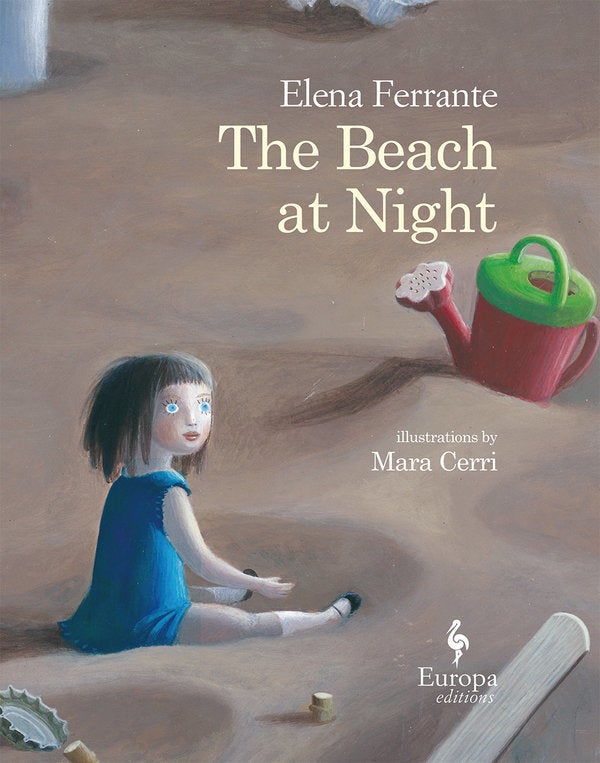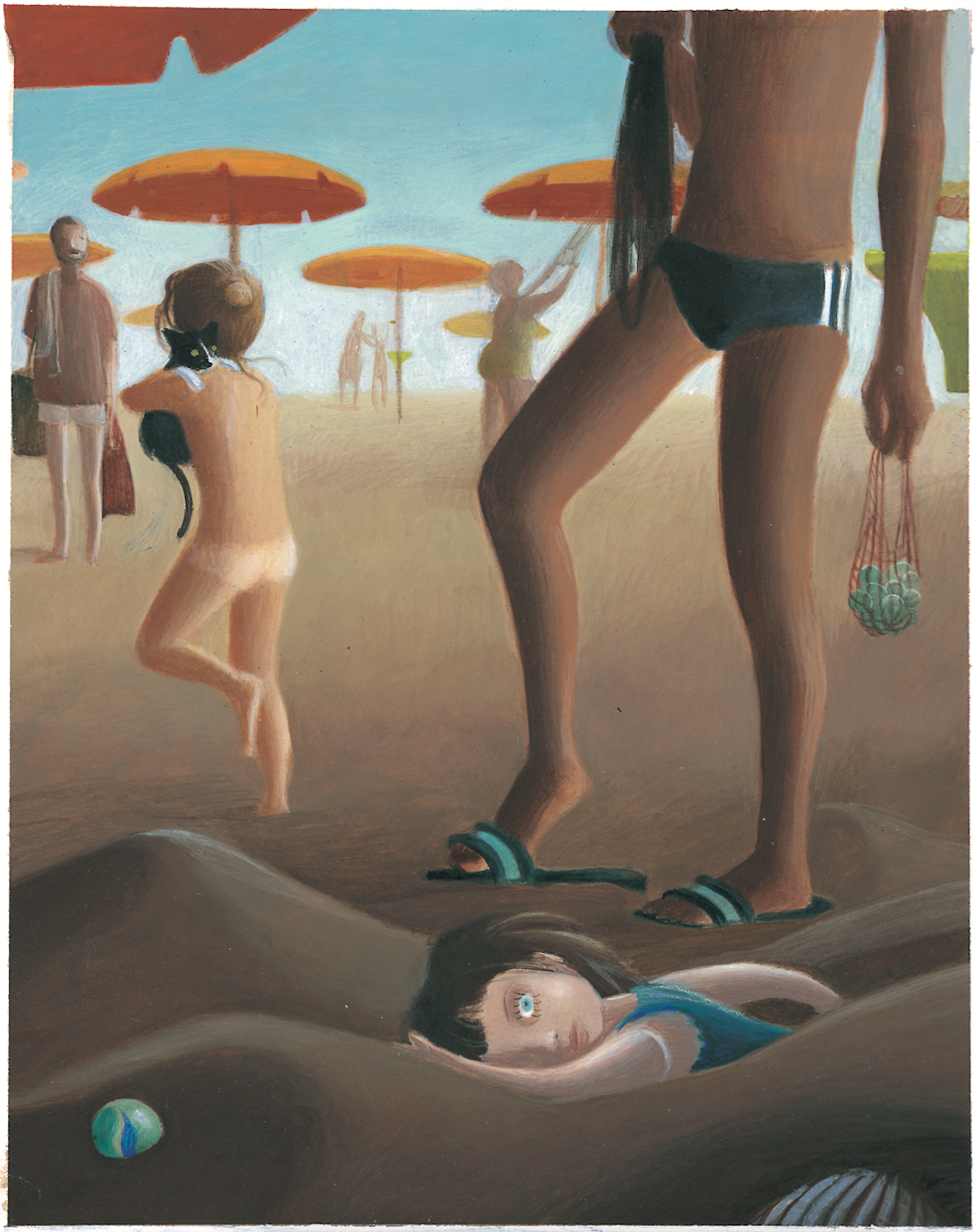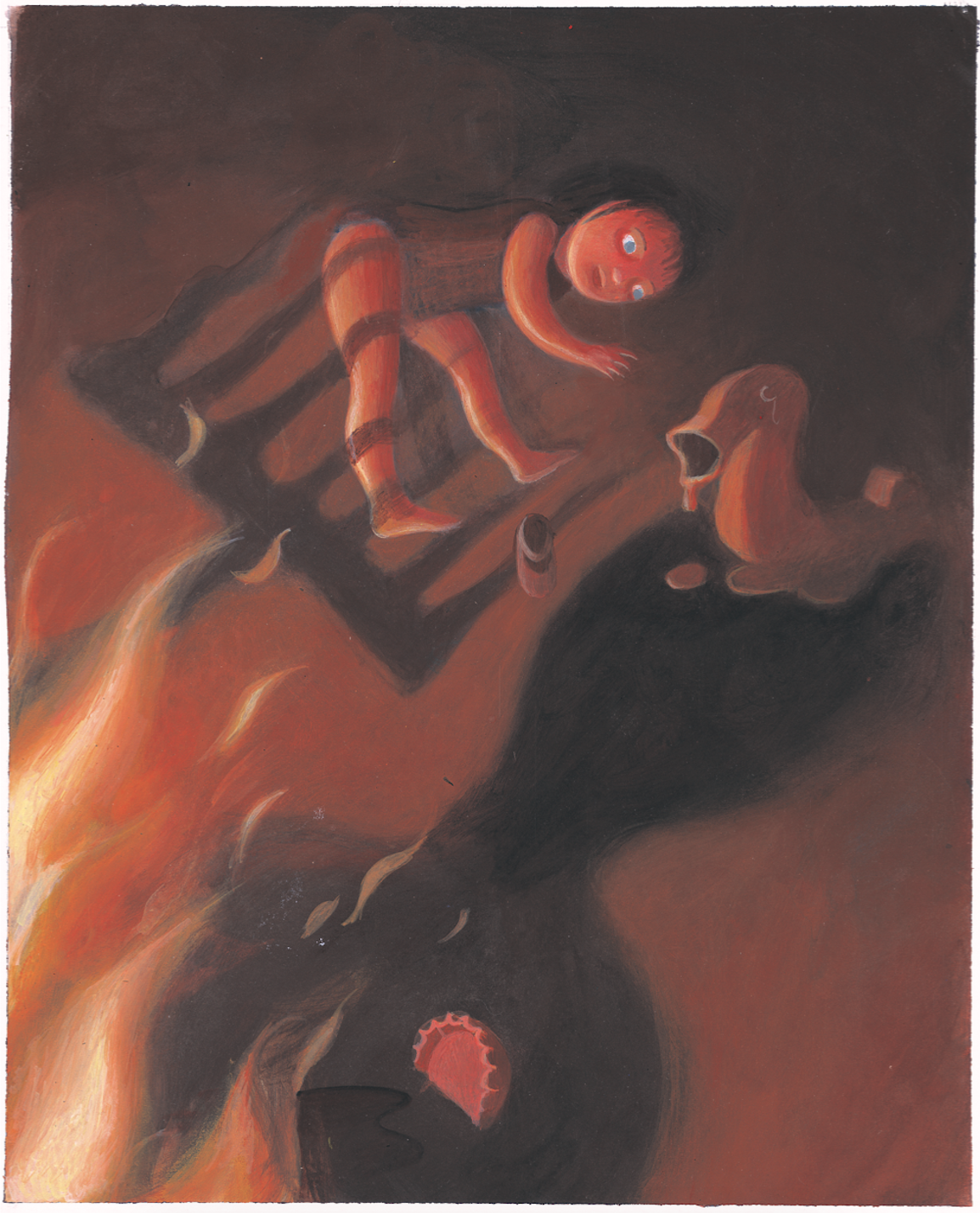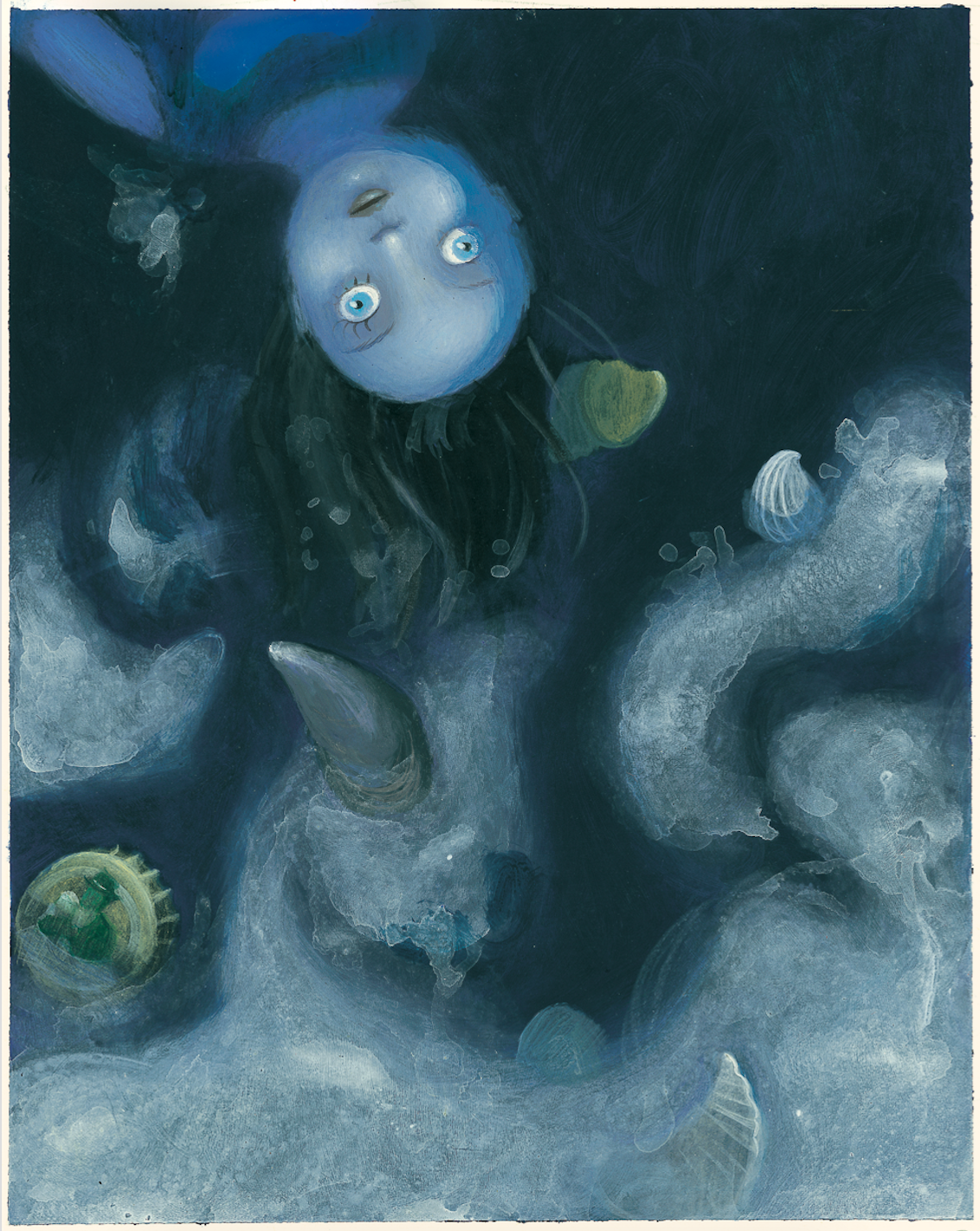“I wish that those who look at my drawings could feel there is a little ripple on the surface of reality,” Mara Cerri said in an interview with The Huffington Post.
The illustrator’s haunting drawings have graced the covers of books and magazines across Italy, including, most recently, Elena Ferrante’s children’s book, The Beach at Night, newly published in English.
It makes sense that an artist who defines herself as “surreal […] but with reality as a reference point” would be tasked with translating Ferrante’s words into images. In the author’s Neapolitan series, one of the two main characters, Lina, continually notes that she sees blurred boundaries in her visual field – an unsettling experience that both bolsters her creative mind and makes it difficult for her to want to leave her dangerous, stifling home in Naples.
The Beach at Night has several similarities to the series chronicling Lina and her friend Lena’s coming of age. In the Neapolitan novels, the girls become friends when they lose their beloved dolls. The Beach at Night is told from the perspective of a doll who’s left behind on a beach, and chronicles the journey she goes on after she’s abandoned.

While lying on the cold beach, the doll thinks, “I’m very sad, and angry, too.” Like something out of “Toy Story,” her owner has replaced her with a shinier toy ― a pet cat. “I hope he has diarrhea, and vomits,” the doll thinks.
The story ― although written for children ― handles some of the same cerebral themes Ferrante confronts in her adult novels. The doll loses a necklace bearing her name, and, without her name, she feels lost and empty. “Now I’m just a little doll without a Name,” she laments.
Ferrante, of course, has wrapped the concept of names and identity into her own approach to writing and authorial fame. She chose to write under a pen name, conducting interviews through her publisher to protect her carefully concealed identity. Earlier this month, that identity was revealed in an investigation by The New York Review of Books.
“I had loved her choice of anonymity,” Cerri told HuffPost. But, names and pen names aside, the illustrator finds much to love in the author’s work. Raised by a family of women, Cerri believes Ferrante’s female protagonists allow her to better connect with the stories.
“The story – although written for children – handles some of the same cerebral themes Ferrante confronts in her adult novels.”
Due to her respect for the author, she reached out to get a better sense of direction for her accompanying illustrations. But Ferrante ― via her publisher ― said that she trusted Cerri, and gave her artistic license to interpret the story as she pleased. The result is a series of soft-edged, dark and dreamlike images, depicting the coexistence of fear and fantasy that so many children experience when playing make-believe.
Cerri said she was interested in communicating the “enigmatic and subtle balance between dark and light, real and fantastic, visible and invisible.”
“Shadow is not always the dark in the negative sense,” she added, “but something momentarily submerged.”
View Mara Cerri’s illustrations for The Beach at Night, published by Europa Editions, below:




